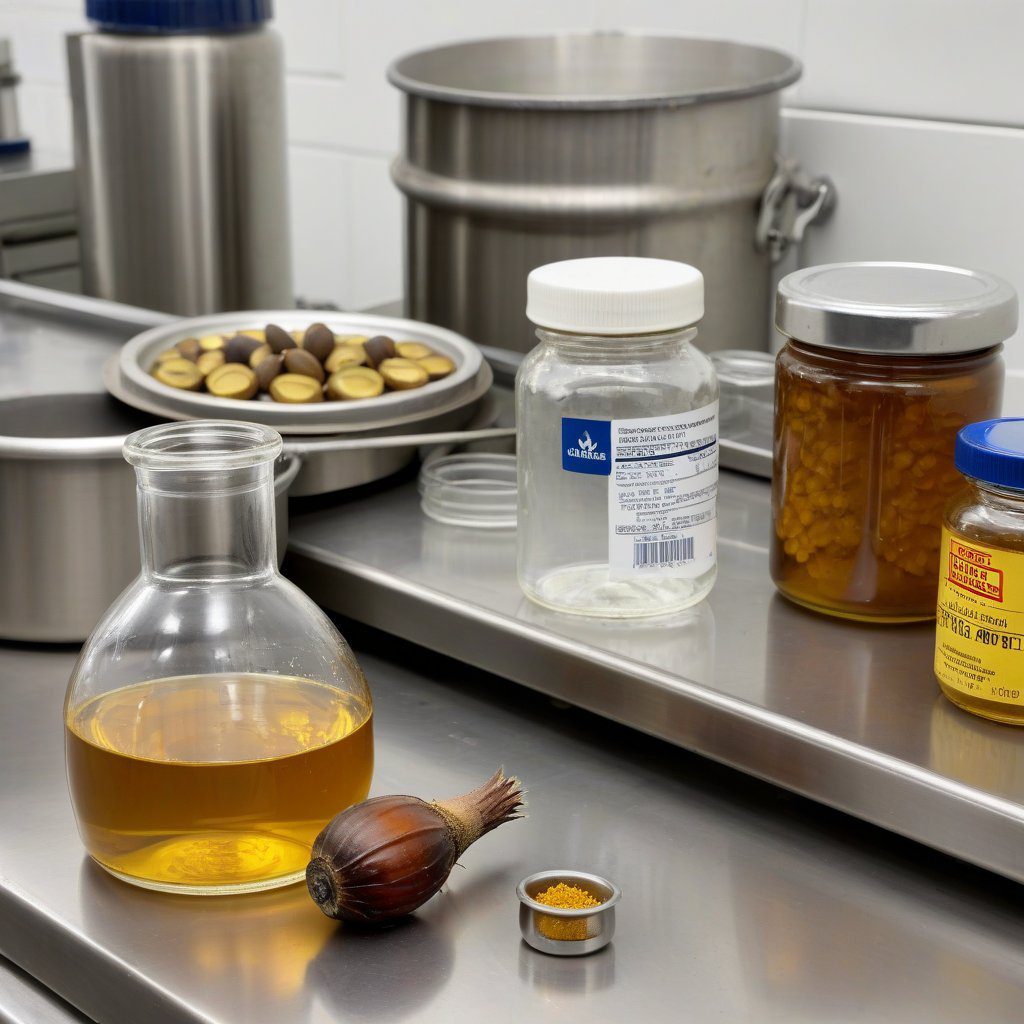What factors drive glycerol pricing in the market? Several elements influence glycerol prices, including raw material costs, demand and supply dynamics, and market trends.
What factors drive glycerol pricing in the market? This question is crucial for companies looking to source glycerol in bulk. Understanding these factors can help you make informed purchasing decisions.
In this post, we’ll explore the key elements that affect glycerol pricing, from production costs to market demand. By the end, you’ll gain valuable insights that can enhance your negotiation strategies with suppliers and help you secure the best deals.
Join us as we delve into the complexities of glycerol pricing and discover how to navigate this competitive market effectively.

What Factors Drive Glycerol Pricing in the Market?
Understanding glycerol is essential for companies seeking to navigate its pricing dynamics. Glycerol, also known as glycerin, is a versatile compound used across various industries, from cosmetics to food production. Its chemical properties, including its viscosity and solubility, make it a valuable ingredient in many formulations.
In terms of classification, glycerol can be categorized into pure, crude, and refined grades, each serving different purposes. Companies must grasp these distinctions to appreciate how they impact pricing and sourcing strategies.
The Significance of Glycerol Pricing in Industry
The pricing of glycerol significantly influences production costs in numerous sectors. For manufacturers, fluctuations in glycerol prices can directly affect profitability and overall supply chain management. Understanding these pricing metrics is crucial for long-term strategic planning.
For instance, a small cosmetics manufacturer might face a sudden price increase and must decide whether to absorb the cost or pass it on to consumers. Evaluating market trends, competitor pricing, and customer expectations can help inform this decision.
Evaluating Glycerol Suppliers: Key Criteria
When searching for a reliable glycerol supplier, companies should consider several critical criteria. Quality assurance is paramount; suppliers like Diplomata Comercial are renowned for their high standards in manufacturing. Reliability in supply is another essential factor, ensuring that companies can maintain production without interruptions.
Pricing stability is also crucial for budgeting purposes. Consistency in pricing helps businesses plan their finances better, allowing for more accurate forecasting of production costs.
Navigating the Glycerol Market: A Step-by-Step Guide
Effectively navigating the glycerol market requires a strategic approach. Companies should start with thorough market research to identify potential suppliers and trends. Establishing relationships with trusted suppliers can lead to more favorable pricing and terms.
Negotiating contracts is another vital step. Companies must ensure they secure the best pricing and quality while also considering the long-term implications of their agreements.
Advanced Strategies for Optimizing Glycerol Costs
To optimize glycerol procurement costs, companies can employ several advanced strategies. Bulk purchasing is one effective method, providing economies of scale that can lower per-unit costs. Furthermore, keeping an eye on market trends can help businesses anticipate price fluctuations.
Exploring alternative sourcing options can also enhance cost-efficiency. Engaging with both local and international suppliers may provide more competitive pricing.
Common Pitfalls in Glycerol Sourcing and How to Avoid Them
Companies often make mistakes when sourcing glycerol, which can lead to costly consequences. One common pitfall is overlooking supplier credentials. It’s essential to verify the reliability and reputation of suppliers to avoid disruptions.
Additionally, failing to analyze market trends can result in poor sourcing decisions. Companies should stay informed about market dynamics to make proactive adjustments to their sourcing strategies.
Case Studies and Practical Considerations
A food company contemplating a switch from glycerol to alternative sweeteners should consider various factors. Price volatility is just one part of the equation; they must also evaluate the functional properties of alternatives and their impact on product quality.
For an entrepreneur launching a new line of personal care products that incorporates glycerol, researching market trends is crucial. Understanding the demand and potential pricing fluctuations will help them make informed decisions before committing to production.
Local distributors facing sourcing challenges due to international supply chain issues should explore contingency plans. Establishing relationships with multiple suppliers can mitigate risks and ensure consistent product availability.
For researchers analyzing glycerol pricing trends over the last five years, key drivers to include in their analysis are production costs, demand fluctuations, and regulatory impacts. This comprehensive overview can provide valuable insights into future pricing trends.
With over 20 years of experience in the chemical market, Diplomata Comercial stands out as a trusted glycerol supplier. Our commitment to excellence in customer service and high-quality products makes us a reliable partner for businesses across various industries.
How Can I Help You
Understanding the factors that drive glycerol pricing in the market can be quite complex, especially in a landscape where quality and reliability are paramount. At DIPLOMATA, with over 20 years of experience in the chemical sector, we know that pricing is influenced by a variety of elements, including raw material availability, production costs, and global demand trends.
Our commitment to excellence is reflected not only in our high-performance products, like refined glycerin and propylene glycol, but also in our attentive customer service, which aims to exceed expectations at every turn.
As a renowned manufacturer and supplier, we focus on delivering superior quality to industries ranging from pharmaceuticals to food ingredients.
By staying abreast of market dynamics, we ensure that our clients receive not just products, but also insights that help them navigate pricing fluctuations effectively.
Let’s explore these factors together, ensuring your business remains informed and competitive in this ever-evolving market.
FAQ
What are the main factors affecting glycerol prices in the market?
Glycerol prices are influenced by several key factors, including raw material costs, production methods, and supply and demand dynamics. The price of feedstocks, like palm oil and soy, plays a significant role since glycerol is a byproduct of biodiesel production. Additionally, changes in regulations, technological advancements, and market competition can affect pricing. Understanding these factors can help businesses anticipate price fluctuations and make informed purchasing decisions.
How do supply chain disruptions impact glycerol pricing?
Supply chain disruptions can significantly impact glycerol pricing by causing shortages or delays in production. Factors such as natural disasters, geopolitical tensions, or pandemics can disrupt the supply of raw materials or transportation. When supply is limited, prices tend to rise due to heightened demand. Businesses need to monitor supply chain conditions closely to mitigate risks and plan for potential price increases in glycerol.
What role does demand from the cosmetic industry play in glycerol pricing?
The cosmetic industry is a major consumer of glycerol, using it for its moisturizing properties. Increased demand from this sector can drive glycerol prices up, especially during peak seasons for cosmetic sales. Companies in the cosmetic industry should consider this demand when negotiating prices and sourcing glycerol, as shifts in consumer trends or new product launches can lead to price volatility.
How do environmental regulations affect glycerol pricing?
Environmental regulations can significantly impact glycerol pricing by influencing production costs and methods. Stricter regulations on biodiesel production, where glycerol is a byproduct, can lead to reduced supply, thus driving prices higher. Additionally, companies may incur costs to comply with these regulations, which can be passed on to consumers. Staying informed about regulatory changes is essential for businesses to anticipate pricing trends.
Why is understanding global market trends important for glycerol pricing?
Understanding global market trends is crucial for glycerol pricing as they provide insights into supply and demand dynamics worldwide. Factors such as changes in production levels in major exporting countries, trade agreements, and currency fluctuations can all affect local glycerol prices. By staying informed about international trends, businesses can better predict price movements and make strategic purchasing decisions to optimize their costs.
How can businesses hedge against glycerol price fluctuations?
Businesses can hedge against glycerol price fluctuations by employing various strategies, such as entering into long-term contracts with suppliers, using financial derivatives, or diversifying their supply sources. Establishing strong relationships with suppliers can also provide more stable pricing. Additionally, companies may consider investing in research to explore alternative materials or production methods that could reduce their reliance on glycerol and protect against price volatility.
What market indicators should I monitor to predict glycerol price changes?
To predict glycerol price changes, monitor key market indicators such as feedstock prices, production levels, and consumer demand trends. Pay attention to reports on biodiesel production, as it directly affects glycerol supply. Additionally, keep an eye on macroeconomic indicators, such as inflation rates and global trade policies, which can influence overall market conditions. Utilizing these indicators will enable businesses to make informed decisions related to glycerol purchasing and budgeting.





